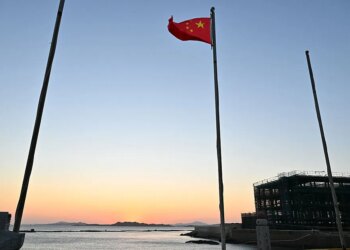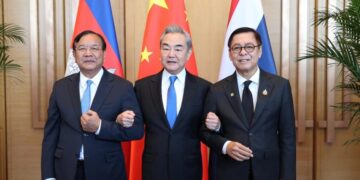Patrick Dempsey Juggles Hitman Double Life With Alzheimer’s Diagnosis in ‘Memory of a Killer’ Trailer
Fox dropped a new trailer for Patrick Dempsey’s “Memory of a Killer,” in which he stars as a hitman struggling...
Trump ‘looks weak’ because Republicans are ‘starting to peel a apart from him’: NYT editor
Building upon a column from The Atlantic‘s Jonathan Lemire, who suggested the president is “suddenly looking a lot smaller” as...
China Mobilizes Forces on Land, Air and Sea for Live-Fire Drill Near Taiwan
China launched military exercises around Taiwan on Monday, mobilizing naval, air, ground and missile forces for what the People’s Liberation...
Halo 2’s Legendary E3 Demo Has Leaked After 22 Years
More than 10GB of Halo 2 assets and builds were just leaked and gamers who are taking advantage of the...
Tame Impala’s Kevin Parker Seeks Out Negative Reviews, Says Releasing Music Is ‘Weird These Days’
Kevin Parker of Tame Impala revealed that he actually seeks out negative reviews of his music. Different social media platforms...
Lightspeed Ventures partner says Sora will make social media creators ‘far, far, far less valuable’
AI-generated video marks a "whole new chapter for the internet," Lightspeed Ventures partner Michael Mignano said. LightspeedLightspeed Ventures partner Michael...
China Holds Military Drills Around Taiwan as a Warning Against ‘External Interference’ After U.S. Arms Deal
China launched extensive military drills near Taiwan on Monday in what it called a “stern warning” against separatist and “external...
All 11 Seasons of ‘The X-Files’ Will Start Streaming for Free on Jan. 1 — Here’s Where
Pluto TV is kicking off the new year with the addition of the iconic sci-fi series “The X-Files,” which will...
Beware this Trump trap — it’s just like the rest of his rotten economy
Yesterday, both Donald Trump and his Secretary of Housing and Urban Development told us that 50-year home mortgages may soon...
1,400-year-old skull with mysterious flat top found in ancient village, startling archaeologists
Archaeologists recently uncovered a surprising 1,400-year-old skull in an ancient village in Mexico — unusual for both its flat top and cube-like...














